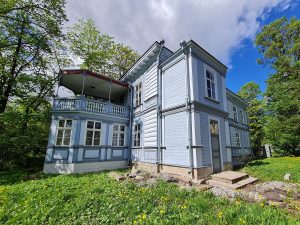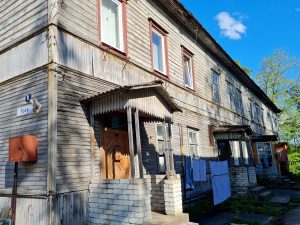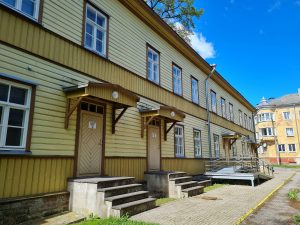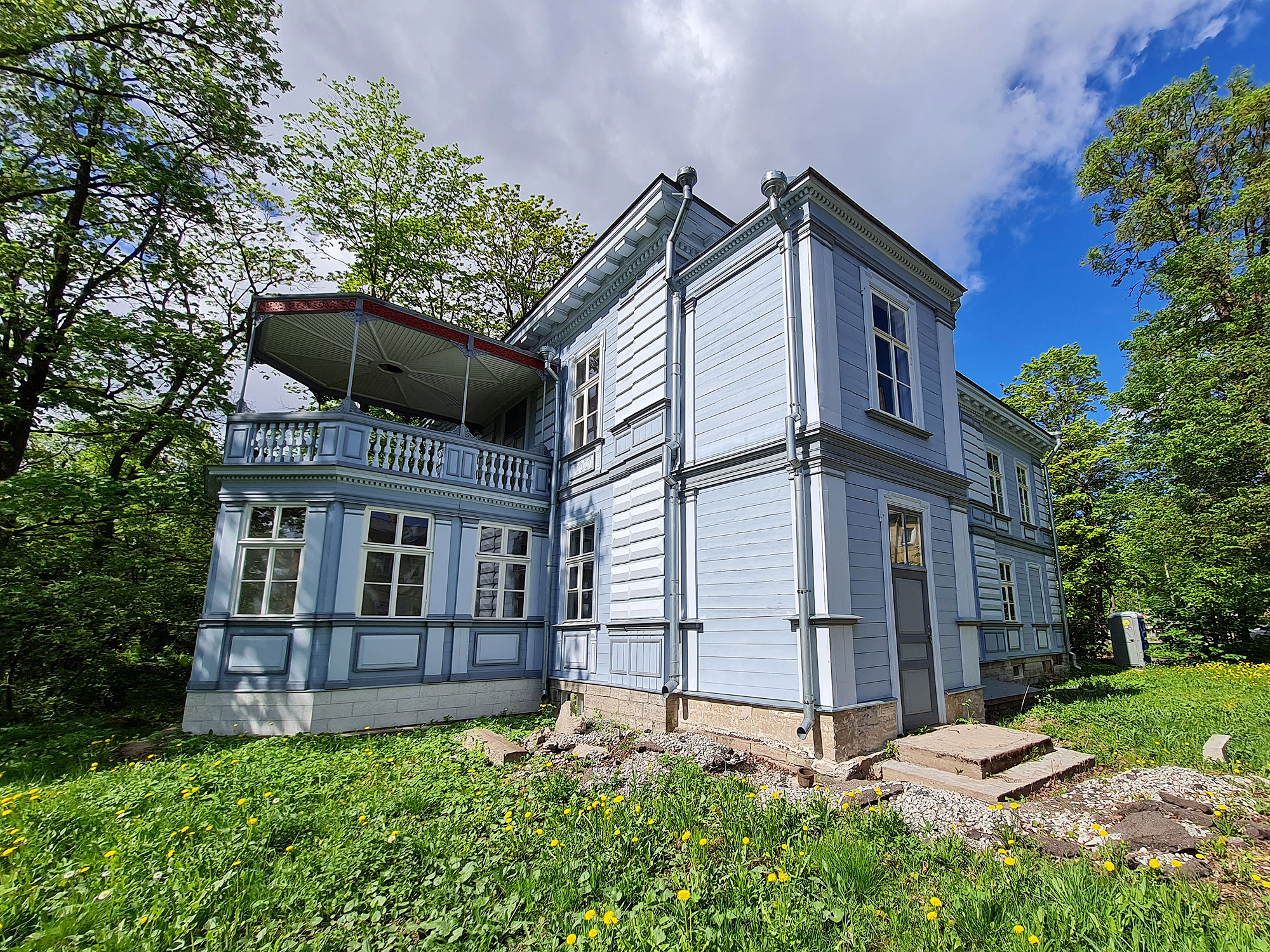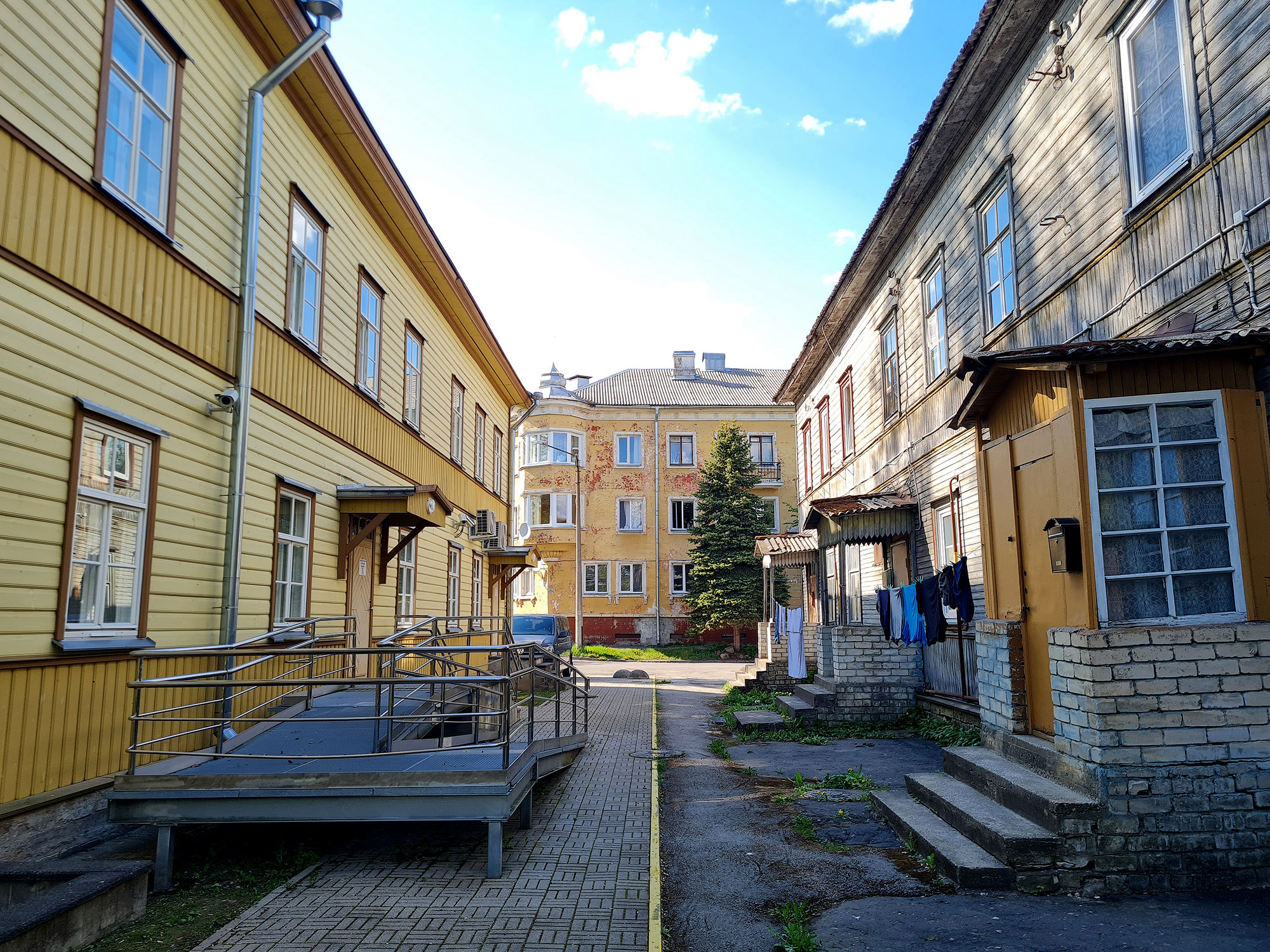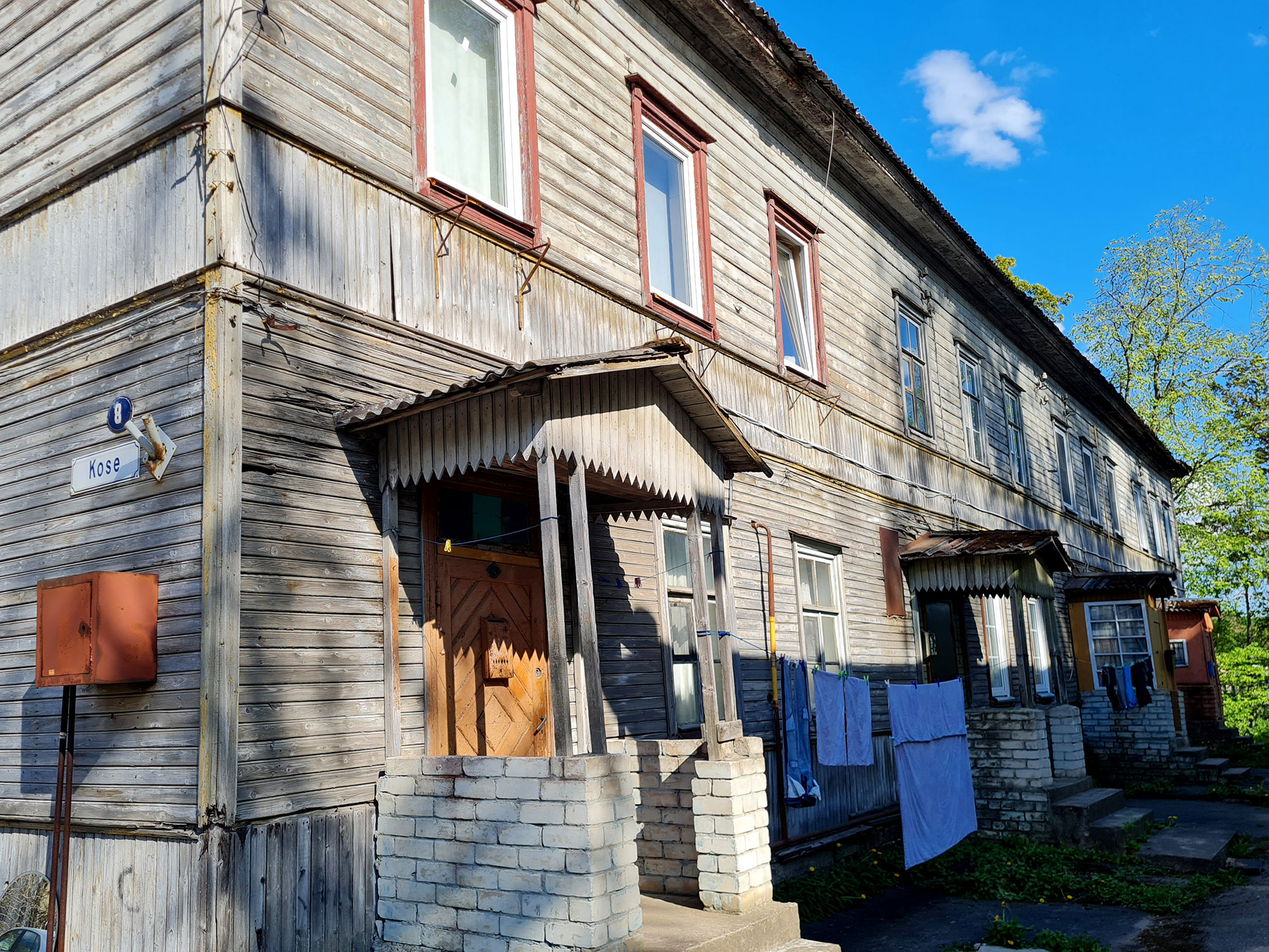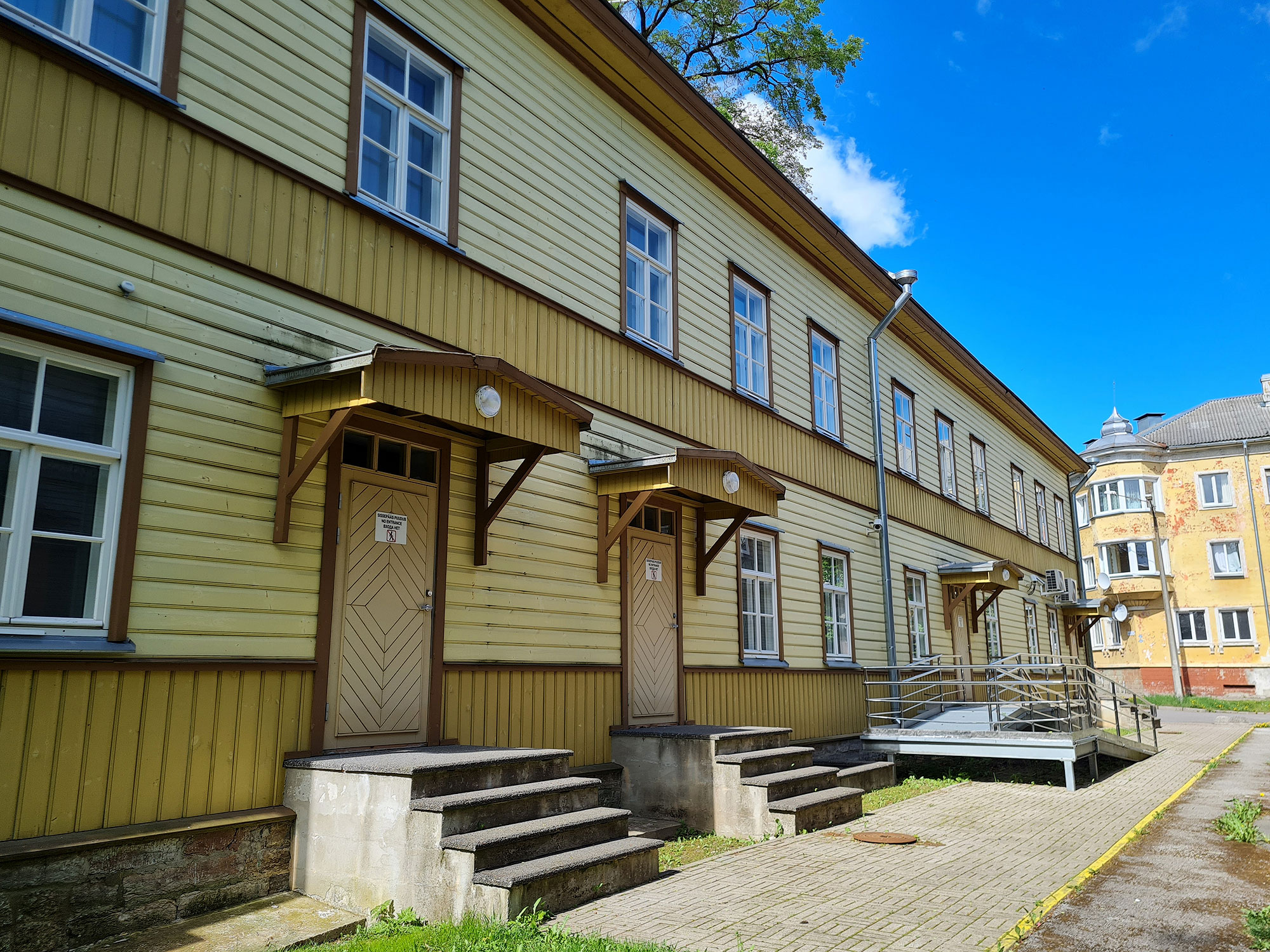At the beginning of Kose street, there are two dwellings for top members of administration. They were built in 1875 and designed by Roman Heinrichsen, who was the architect of the Kreenholm factory at that time. Both buildings are fine examples of historical wooden architecture. The log houses with clapboard are built in four blocks, each with only two apartments. The second floor can also be accessed directly from the yard. The building on Kose 6 now houses the border and customs point of the Republic of Estonia, which is currently closed due to the small number of border crossers. The interior of the house has been thoroughly rebuilt. The one on Kose 4 is still a residential building today.
The residence of the manufacture’s long-time technical director, Walter Shawcross from Manchester, is also fascinating. Similar to the stone buildings built at the same time, it has many beautiful details which imitate stone architecture. The curved veranda which faces the river is worthy of special attention. The office of the director, who managed Kreenholm’s life for three long decades from the 1860s to the 1890s, was also located in the same building. The building is privately owned and its facade was restored a few years ago.
On the side of Joala street, there is another wooden house, which used to be a dwelling of the manufacture’s department heads. Unfortunately, it is in a rather poor condition now.
The life of workers in Kreenholm in the second half of the 19th century was not easy, the working day started at 5 o’clock and lasted 14 hours. However, the length of the working day and the salary were not the only motivating factors for the first worker protests. The main reason was the COVID of the time, cholera, which lead to 330 deaths in Kreenholm. People were forbidden to leave Kreenholm to escape the disease. The workers’ rebellion lasted for a month and a half and it was put down with the help of bayonets. As a result, 27 workers were sentenced to forced labor, sent to disciplinary battalions and prison or banished. A major concession given to the workers was no longer having to come to work at 5, but instead at 5:30. The working day was shortened by half an hour, although the salary was not increased.
This strike of Narva manufacture workers in 1872 is considered the beginning of the Estonian labor movement. The next strike was ten years later, in 1882. This strike was initiated by Keenholm’s female weavers. By the beginning of the 20th century, two out of three Kreenholm workers were women.
At that time, the workers of Kreenholm relied on the tsarist authority and possible support from the governor. No historical source proves this, but in the 1930s, there was talk of three women, one of whom had a nickname Masha the Dyer, because of the name Masha Maler (in Estonian maaler means dyer). Three women escaped over the wall of the Kreenholm factory (because they were not allowed out of the factory territory), but one of them got stuck hanging on the wall, caught in the hem of her skirt. Luckily, the fabric was strong enough to hold her weight, and her girlfriends managed to save the poor girl. Together, they reached Tallinn without a hitch, where the brave Masha met with the governor. Speaking German and Russian and her friendship with the governor’s servant, who was black, certainly helped her. After this event, the governor began to pay more attention to the activities of the factory’s managers.
